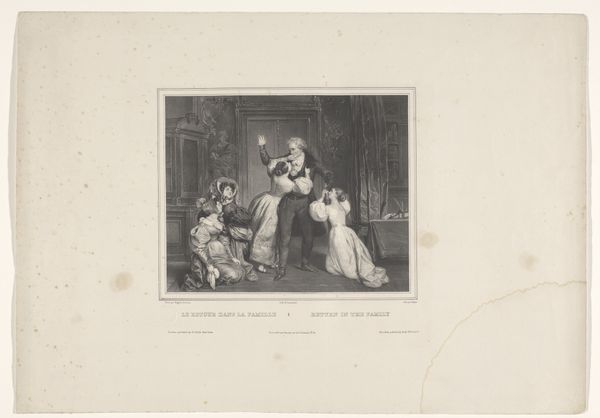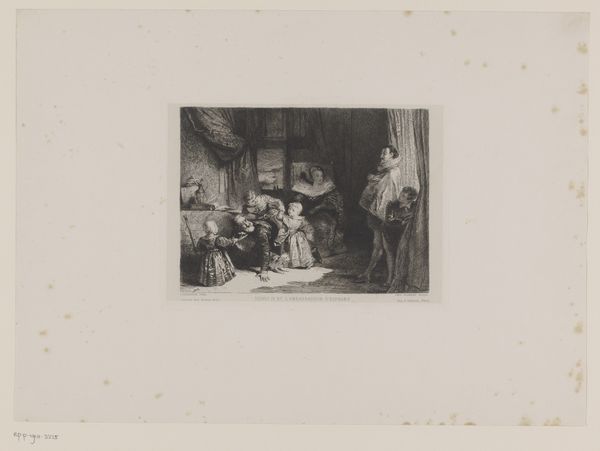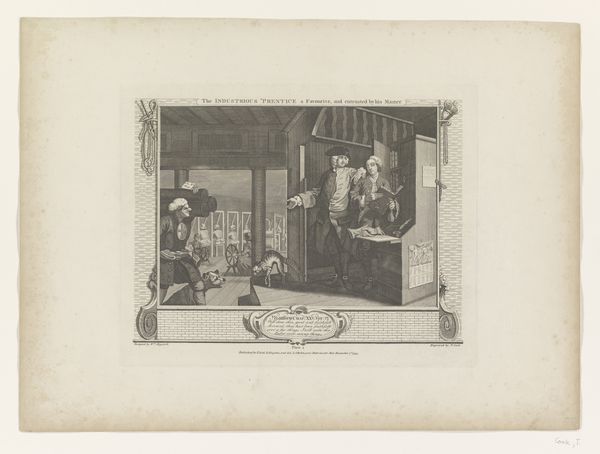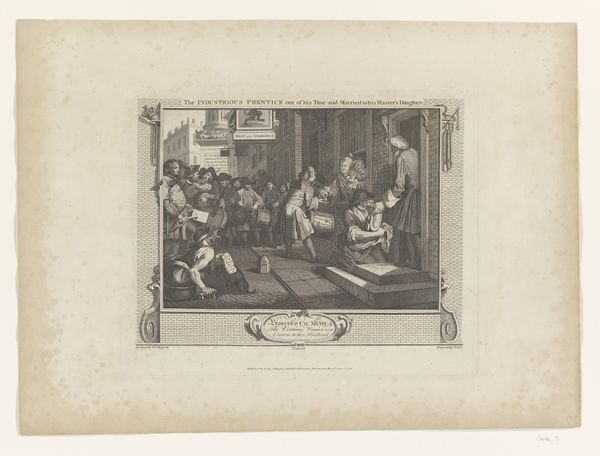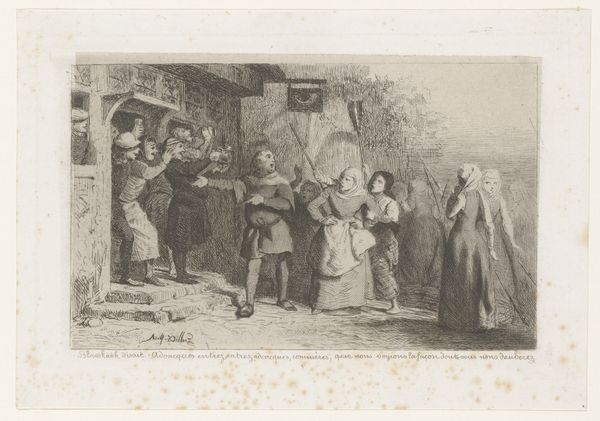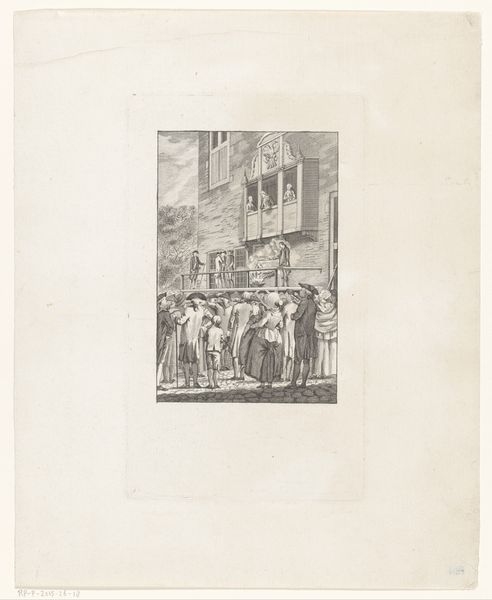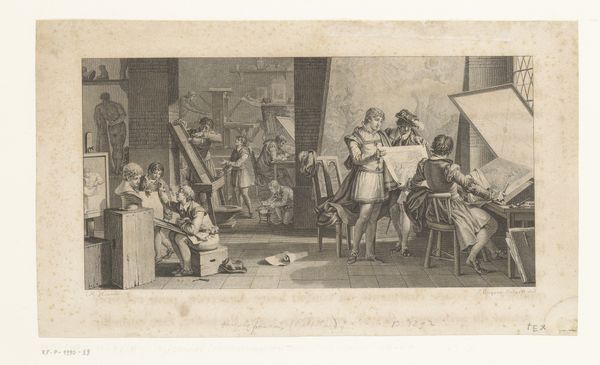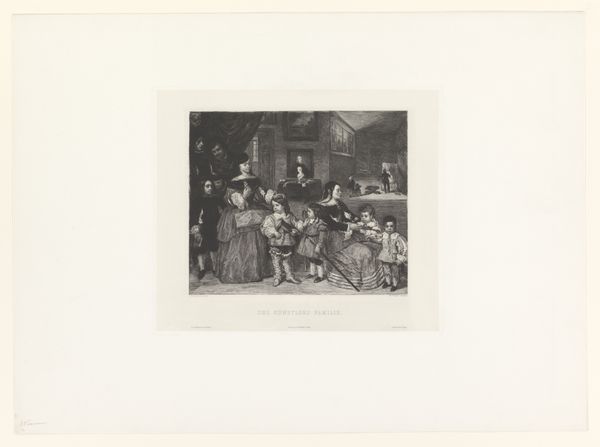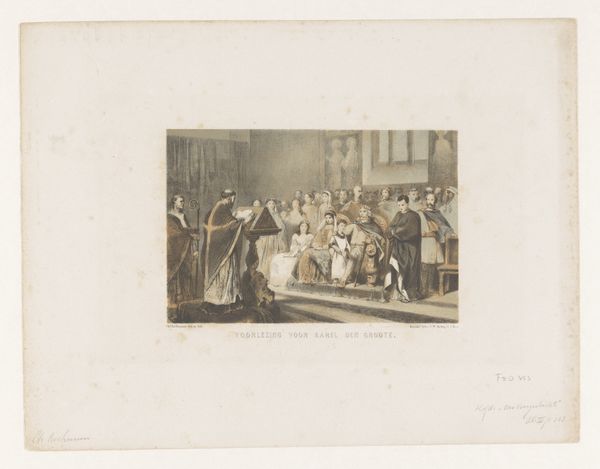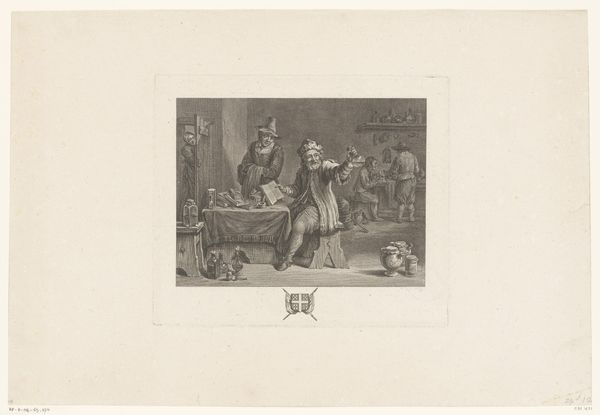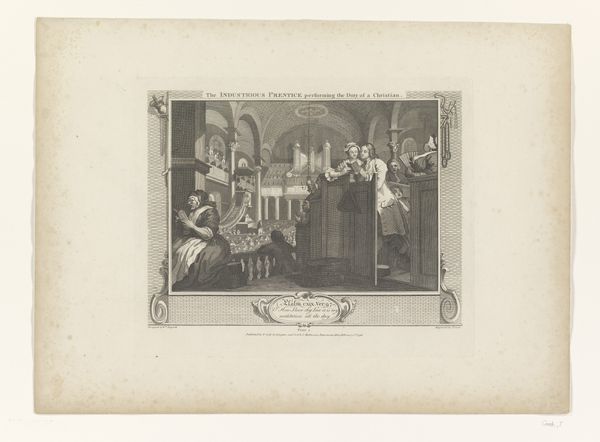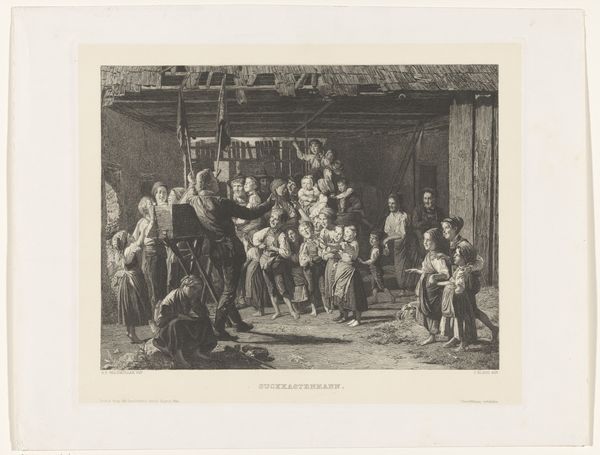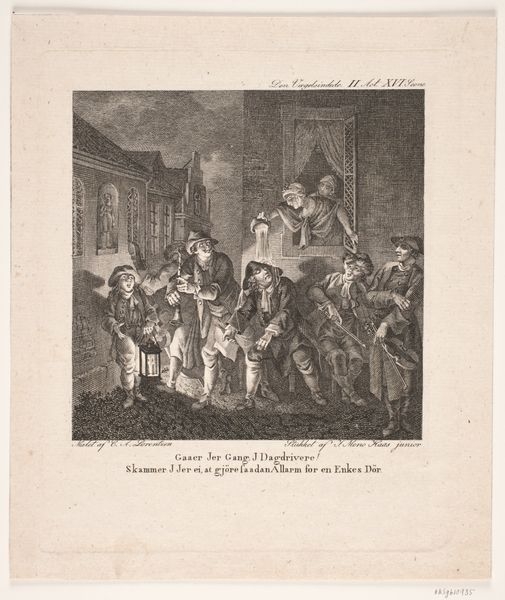
Dimensions: height 214 mm, width 268 mm
Copyright: Rijks Museum: Open Domain
Curator: Let's turn our attention to this intriguing engraving, "Koets op de binnenplaats van een herberg," or "Carriage in the Courtyard of an Inn," attributed to Ernst Ludwig Riepenhausen, likely created between 1775 and 1840. Editor: Immediately, I'm struck by the density of activity and social interactions captured in a seemingly mundane location. There’s an overwhelming sense of community and collective living in the scene—very theatrical. Curator: Indeed, it provides a window into 18th or early 19th-century social dynamics. Think about inns as crucial spaces for travelers, merchants, and all social classes mixing. Notice how Riepenhausen positions the carriage—the very symbol of travel and trade—as the focal point around which this micro-society thrives. Editor: Right, the material production required to construct such a carriage points to networks of artisans, laborers, and trade routes. Engravings, like this one printed on paper, further democratized access to imagery. Reproductions like these fueled new industries and tastes that moved beyond elite audiences. It’s a tangible record of how material culture circulated and shaped everyday lives. Curator: Precisely. Note how the artist uses perspective and layering to emphasize the bustle, the many witnesses from all walks of life crammed into this confined courtyard and even watching from windows above—almost as though the coach's arrival and departure are a piece of community theatre. It really underlines the Inn’s status as a pivotal public stage. Editor: Look closely at the attire and gestures depicted, too. Each character seems to occupy a distinct niche defined by their labor, status, and class—evident in the way Riepenhausen renders texture, such as the heavy wool clothing. Curator: A crucial point. Riepenhausen cleverly uses detail to not only establish atmosphere but to also communicate clear social hierarchies through how clothing defines everyone from the travellers to the kitchen staff and street urchins, each contributing to this hub of social and economic activity. Editor: Reflecting on the engraving process, I wonder about Riepenhausen's labour; he must have been intimately aware of material transformations: raw materials, carved plates, printed editions – all intertwined social processes of creation, distribution, and consumption. Curator: It leaves us with plenty to consider about the broader context of the print’s reception, doesn’t it? Editor: Indeed. There's a clear interplay between materiality, social interaction, and artistic distribution occurring within and beyond this busy courtyard.
Comments
No comments
Be the first to comment and join the conversation on the ultimate creative platform.
